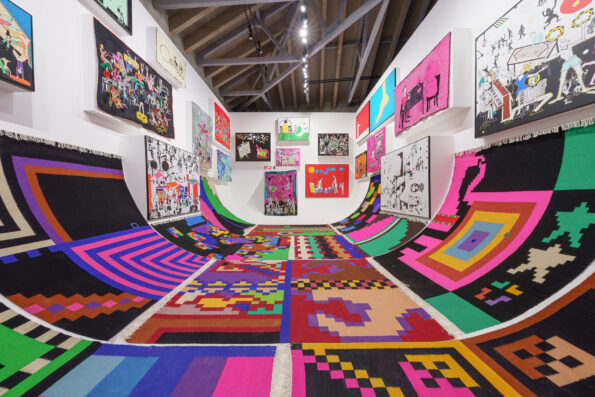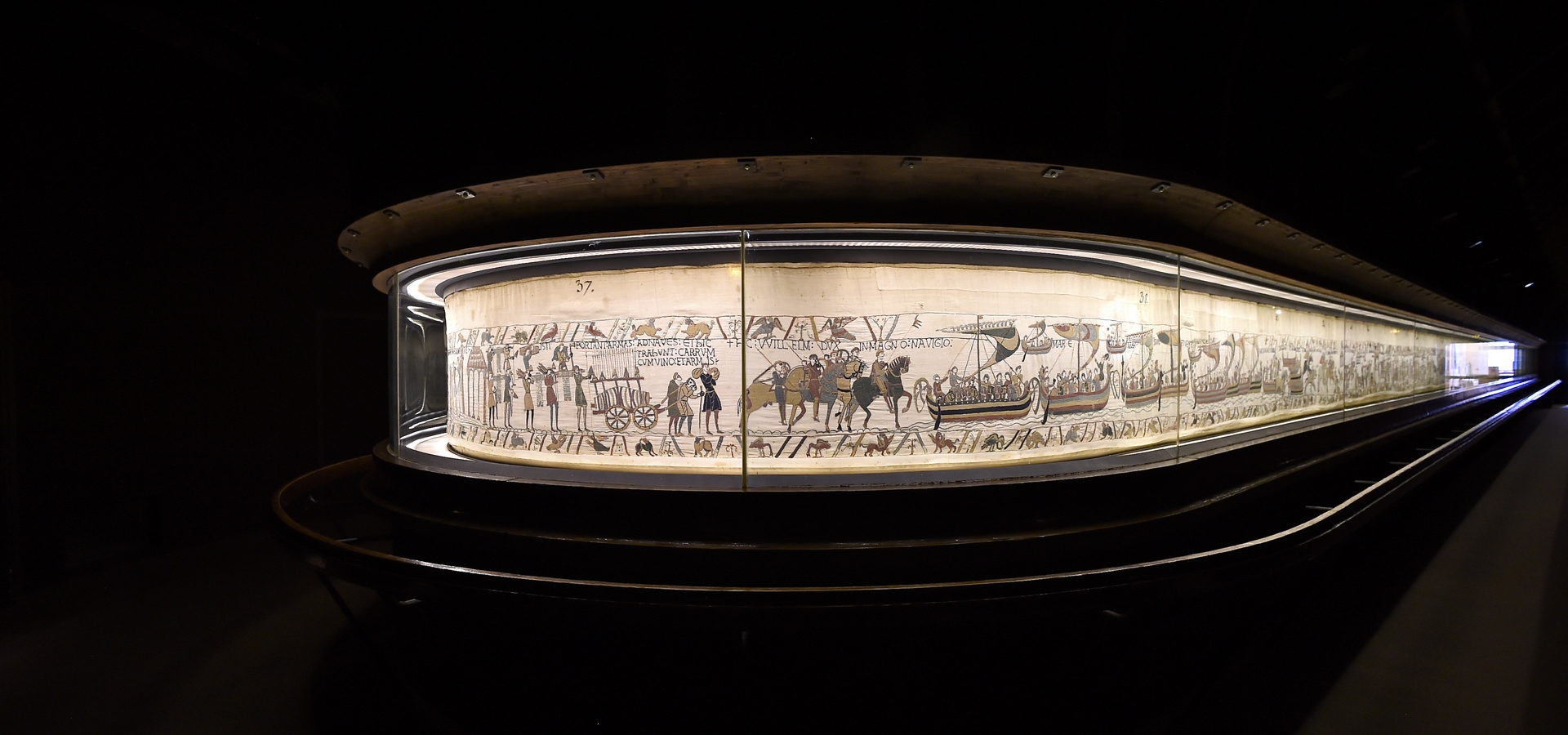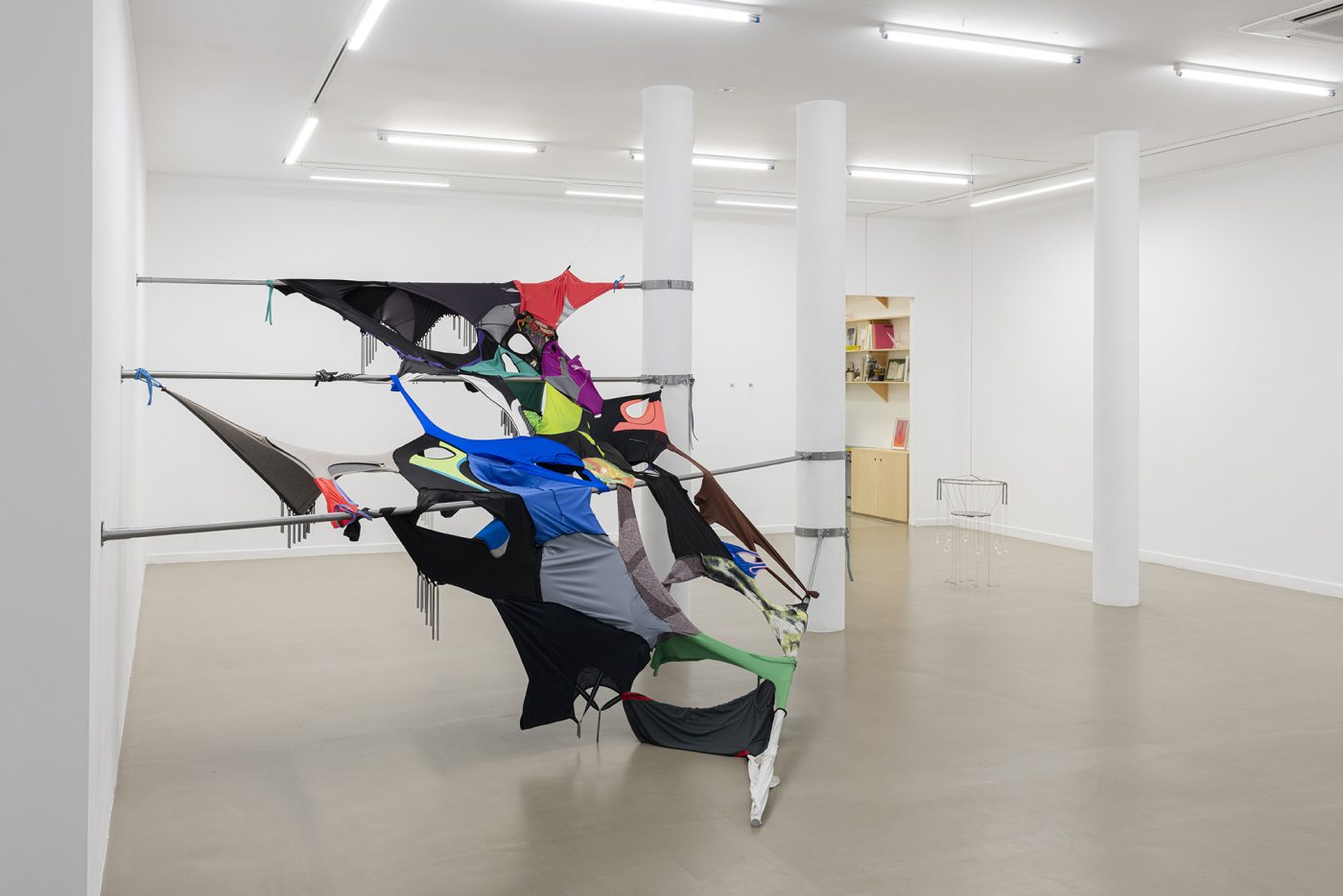Search
To search for an exact match, type the word or phrase you want in quotation marks.
A*DESK has been offering since 2002 contents about criticism and contemporary art. A*DESK has become consolidated thanks to all those who have believed in the project, all those who have followed us, debating, participating and collaborating. Many people have collaborated with A*DESK, and continue to do so. Their efforts, knowledge and belief in the project are what make it grow internationally. At A*DESK we have also generated work for over one hundred professionals in culture, from small collaborations with reviews and classes, to more prolonged and intense collaborations.
At A*DESK we believe in the need for free and universal access to culture and knowledge. We want to carry on being independent, remaining open to more ideas and opinions. If you believe in A*DESK, we need your backing to be able to continue. You can now participate in the project by supporting it. You can choose how much you want to contribute to the project.
You can decide how much you want to bring to the project.

Contemporary art celebrates the rebirth of textiles! In 2022, weaving has become one of the favorite expressions of contemporary artists. Women artists have managed to resignify a practice, in principle, degraded by the relationship with the feminine, and have placed it in the foreground as a weapon of vindication and expression.
The 18th century and the Enlightenment were responsible for degrading textiles as one of the “minor arts”, especially because of its link with femininity; however, works such as the Bayeux Tapestry -embroidery- show us to what extent textiles, before their degradation, were used to decorate and narrate the most important stories in medieval times. Today naked, the main churches and palaces were decorated with tapestries, embroideries and all kinds of fabrics that served as a symbolic form of prestige.
 Bayeux tapestry, 1066, Bayeux Museum. Photo credits: Ville de Bayeux. Available at: https://www.bayeuxmuseum.com/en/the-bayeux-tapestry/
Bayeux tapestry, 1066, Bayeux Museum. Photo credits: Ville de Bayeux. Available at: https://www.bayeuxmuseum.com/en/the-bayeux-tapestry/
After their abandonment and degradation, this 2022 textile practices have returned with the intention of revolutionizing the current art scene. To understand this fact, we must pay attention to one of the most prestigious events of contemporary art: the Venice Biennale. Elisabet Trulla, in the article “El Comeback del teixit”, included in the third issue of Hartes magazine[1]Available at: https://issuu.com/hartesconhache/docs/hartes_por_p_ginas, tells us about the great impact and representation that the fabric has had in the event: we find it in the national pavilion of Kosovo, with the great work of Jakup Ferri; in the Kenyan pavilion, with the collaboration of several artists; in the pavilion of Kirghizistan, with the work of Firouz Farman; in that of Poland, by the artist Malgorzata Mirga-Tas; and in that of Uganda, with the works of Acaye Kerunen and Collin Sekajugo. And even in the surreal world The Milk of Dreams by curator Cecilia Alemani, which is built in a more evident way between the Central Pavilion and the Arsenale, we see how the works of artists Sofia Farhat, Myrlande Constant, Mrinalini Mukherjee or Violeta Parra enter and become part of it from their textile-based production. Each one with its own peculiarities, all the works share a common link: based on the tradition of textile and weaving, they reinterpret, invent and create a link between tradition and the present.
 View of the exhibition Re-echanting the World, Malgorzata Mirga-Tas, Polish National Pavilion, Venice Biennale, 2022. Photo: Marco Cappelletti.
View of the exhibition Re-echanting the World, Malgorzata Mirga-Tas, Polish National Pavilion, Venice Biennale, 2022. Photo: Marco Cappelletti.
But there is no need to go so far away either, since, in our closest context, in Barcelona itself, textiles have been very present: MACBA, the most important institution in Barcelona as far as contemporary art is concerned, presented the work of Teresa Lanceta in Tejer como código abierto [Weaving as open code], a series of canvases that flooded the different rooms of the center. Lanceta understands the act of weaving as an open code, a practice that allows reading, transforming and transmitting stories of the Raval or the Middle Atlas -places that have a meaning for her- through technique, a knowledge that is built at the same time as the fabric. This makes her works the message as well as the code, the channel and the context.
 View of the exhibition Teresa Lanceta. Weaving as open code, MACBA, 2022. Photo: Miquel Coll.
View of the exhibition Teresa Lanceta. Weaving as open code, MACBA, 2022. Photo: Miquel Coll.
And it is not only in the big circuits, but fabrics and weaving have been part of the most alternative panorama of the city. Thus, Bombon Projects in Barcelona, which is committed to young artists, brought us the work of Noela Covelo. In the room, the artist created a large construction, where a set of textile pieces sewn together was tightening, while a strident music played in the background. The meaning that could be extracted was diverse, but above all we can find that relationship between the clothes, the act of sewing and the social pressures turned towards the female sector, in what we could understand as an irony of the expression “sew and sing”.
 View of the exhibition I want to be important to you, Noela Covelo, Bombon Projects, 2022. Photo available at: https://bombonprojects.com/exhibition/quiero-ser-imporante-para-ti/
View of the exhibition I want to be important to you, Noela Covelo, Bombon Projects, 2022. Photo available at: https://bombonprojects.com/exhibition/quiero-ser-imporante-para-ti/
As we can see, textiles in 2022 have demonstrated their expressive capacity: it is able to tell us about tradition, but at the same time to explain and reinterpret history, from the Bayeux Tapestry to Malgorzata Mirga-Tas and Teresa Lanceta today; it allows us to talk about the link between the material and who creates it, it tells us about a personal story, as do Lanceta and Noela Covelo themselves; And at the same time it is able to bring back the monumentality that once counted in the current social context, as demonstrated in Jakup Ferri’s The Monumentality of the Everyday, where the artist dresses the contemporary white background in the same way that the cathedrals and palaces of the past were dressed. Sewing and weaving have come back to become one of the most used tools by artists, but will this 2023 show prove that textiles are back to stay?
[Featured image: View of the exhibition The Monumentality of the Everyday, Jakup Ferri, National Pavilion of the Republic of Kosovo, Venice Biennale, 2022. Photo: Andrea Avezzù.]
| ↑1 | Available at: https://issuu.com/hartesconhache/docs/hartes_por_p_ginas |
|---|

Gerard Zamora (Sant Cugat del Vallés, 2001) holds a degree in Art History with a mention in Artistic Heritage Management (UAB), and a master’s degree in Contemporary Art History and Visual Culture (UAM, UCM, MNCARS). His research has been based on the exploration of the contemporary artistic fabric of Barcelona and Madrid. He has also participated as curator in exhibitions such as “Entre lo íntimo y lo exterior” (Galería Nueva) and “Sobre la mesa: Semióticas de la cocina” (Biblioteca MNCARS); and collaborates in publications such as A*Desk Critical Thinking.
"A desk is a dangerous place from which to watch the world" (John Le Carré)